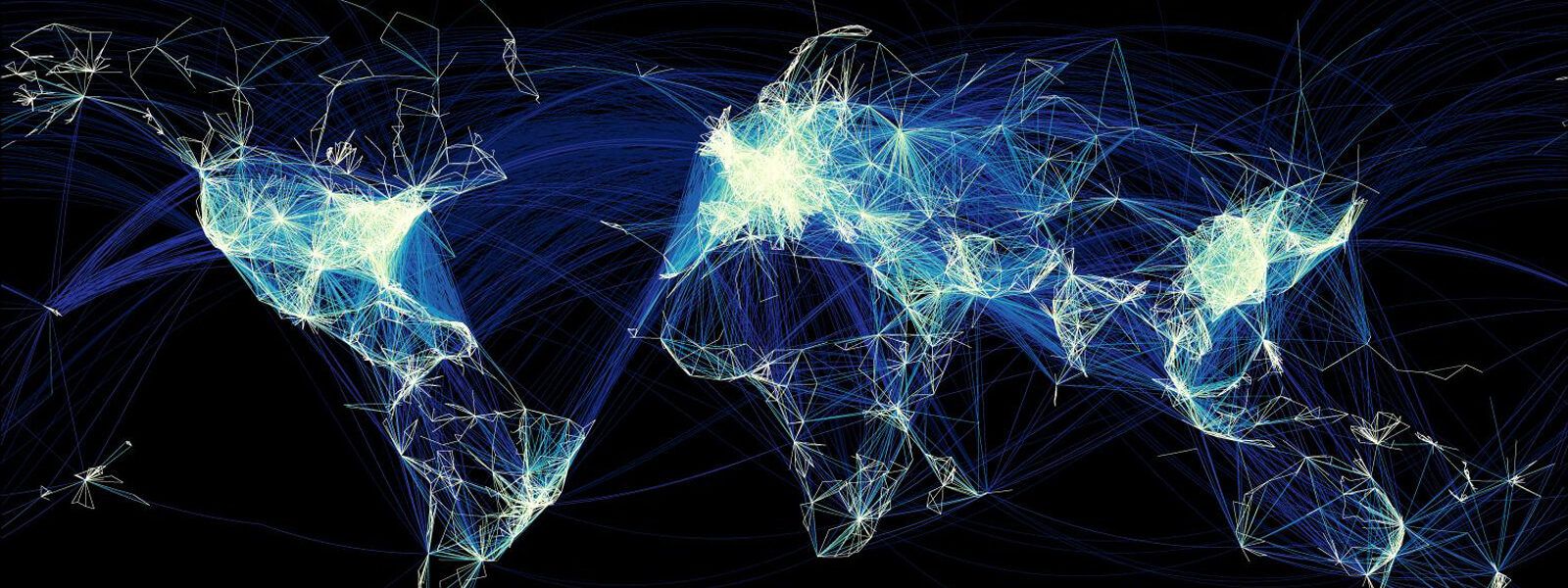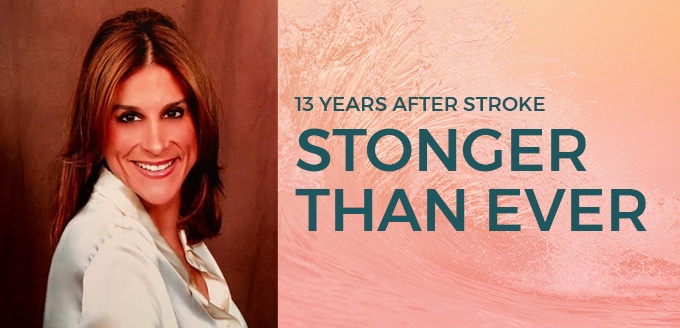

Stroke Survivor Leads Stroke Support Groups
by Zara Jethani
Pacific Stroke and Neurovascular Center ‘s patient support group leader Dana Rivera celebrates her 13th year post-stroke and talks about her journey from devastation to success.
A life-changing diagnosis
In the summer of 2009, at the age of 44, Dana’s life changed forever. An active, full-time mother and wife, Dana Rivera suddenly began to experience troubling symptoms. “As I was getting out of the car, I dropped my keys and my arm felt like it was flung out of its socket. It was a weird sensation, but I thought nothing of it and continued to walk into the store. Once inside, I started looking around, and all of a sudden, I just collapsed, The salesperson came over and asked if I was alright and while I could understand what she was saying I was feeling incoherent and slurring my words. In addition, I couldn’t get my body to move and stand up.”

Dana was taken to a hospital, where the doctor later released her, thinking her symptoms indicated a menopausal migraine. “I had not yet experienced any paralysis, but was still feeling incoherent and vomiting,” Dana said. She was rushed back to the hospital, and when she arrived for the second time, she was totally paralyzed on her left side. It was obvious she was having a stroke.
At the hospital, the CAT scan and MRI showed that Dana had suffered a stroke caused by patent foramen ovale (PFO) – a hole in the atrial wall of the heart that affects 1 in 4 people. Dana explained, “Many people live with it [PFO] and don’t know they have it until they get a clot, which can travel to the brain and cause a stroke. That’s what happened to me. I had never had an MRI before, so I never knew I had the PFO. Being fit my whole life, no one would have ever guessed that I would have a stroke.”
The path to recovery
“You may not control all the events that happen to you, but you can decide not to be reduced by them,” Maya Angelou.
Dana spent the week in the ICU and was then transferred to the acute rehabilitation unit where she spent three and a half weeks learning to walk and use her left hand and arm again. “It was a very dark time,” Dana said. “As the mother of four teenagers between the ages of 13 and 18, I had always been super mom, multitasking and doing everything for my family. I didn’t know what my future held for me anymore, especially since I was now paralyzed. It was very scary…[However,] the acute setting was just the starting point of my recovery. It was the opportunity to begin working hard on getting my deficit back.”
After Dana left the acute center, she went home and received outpatient therapy. In addition to this, she incorporated daily walks with her husband, beginning with half a block and progressing until by the three-month mark, she was able to walk about two miles. As time went on, she was able to finally get rid of her brace, walker, and cane. “This was so freeing, because in my mind that equaled independence again and I began to feel more positive and optimistic. I was getting better,” said Dana.

Recovery was very slow, but Dana kept at it. She incorporated yoga into her regimen to help her regain balance and mobility, as well as develop arm, wrist, and hand strength. “The fear factor is very high at the beginning after stroke because you’re scared you are going to suffer another one. I was very fearful, so I eased this feeling with yoga breathing and meditating,” Dana said.
It took about four and half months for Dana to physically recover. “It will and does happen, it’s just slow,” she said. “So it’s important to make small goals for yourself to keep motivated because big goals can be too difficult and too daunting.”
Reaching the seemingly impossible goal
One of Dana’s goals was to walk in her wedge heels again. “As a woman, wearing heels is a big part of my femininity,” she explained. “I was determined to reach my goal and five months after my stroke I was able to walk in my heels on my husband’s birthday.”
After six months, Dana decided to have a procedure to close the hole in her heart so that she would no longer have to be on blood thinners. She now takes a daily low-dose aspirin instead. It took Dana a full year to feel like herself again. “This time I was a better version of myself because of everything I had gone through,” Dana explained. With the hope of inspiring others, she wanted to share her story and experience.
“Being so young when I had my stroke, I thought my life could have been over in so many different ways,” she said. “Dealing with the physical, emotional, and mental challenges of recovery are not easy, and I wanted to help others young or old.”
She approached UCLA’s Neurological Rehabilitation and Research Unit (NRRU) where she had been a patient and since 2010 has spent her time volunteering by leading and co-leading support groups. In addition, she has created her own community support groups in the Pacific Palisades and Brentwood areas.
Supporting stroke survivors
Dana began leading the stroke and patient support group at PNI’s Pacific Stroke and Neurovascular Center located at Providence Saint John’s Health Center in 2015. She facilitates the monthly group, inspiring survivors to stay motivated and focused on their recovery. She also began a Stroke Caregiver Support Group to address issues that confront the dedicated family caregivers who support stroke survivors.
When it comes to leading the support group, she says, “I come to our participants in my authentic self. Being raw and vulnerable is a very important ingredient when working with survivors. I have the empathy and sympathy to understand what they went through and are going through. The most common deep concern is about when they are going to get better. I share with them that it is an ongoing recovery and every day counts…what they put into it physically and mentally yields results.”
Various topics are discussed, including useful resources, new technology, and clinical trials. Dana always checks in with each person to see how they are doing. “Apart from physical therapy, occupational therapy, and speech therapy, a big part of the stroke recovery that cannot be underestimated is attending a survivor stroke group,” she explained.
“Depression is [also] a major factor after having a stroke,” Dana continued. “Not many loved ones understand the fine line we walk every day. A group can offer a shoulder to cry on or simply provide a space where you can just listen. It becomes a family of sorts and as everything is confidential, it is a safe haven.”
Dana Rivera is an advocate for the American Heart Association. She has participated in the Rose Parade, charity fashion shows, events, and radio talk shows. She encourages survivors by letting them know that with determination and motivation, they can get better. She says, “Their recovery may not look the same as mine. Every stroke is different and having support is a main ingredient in the recovery process.
About Pacific Stroke & Neurovascular Center
Pacific Stroke and Neurovascular Center offers leading-edge treatments and nationally recognized care for all types of neurovascular disorders at four locations in southern California. Our comprehensive stroke centers are staffed by highly qualified and seasoned experts. Every stroke and neurovascular patient is seen by fellowship-trained neurovascular stroke specialists rather than generalists. You can be confident of your care in the experienced and capable hands of our team of neurointerventional surgeons, vascular neurologists and neurosurgeons.
Stroke Center & Neurovascular Locations
The Pacific Stroke and Neurovascular Center’s state-of-the-art facilities are located at:
Providence Saint John’s Health Center
2125 Arizona Ave., Santa Monica, CA 90404
310-829-8319
Providence Little Company of Mary Medical Center Torrance
4201 Torrance Blvd., Suite 520, Torrance, CA 90503
424-212-5340
Providence Saint Joseph Medical Center
501 S. Buena Vista Ave., Burbank, CA 90505
818-847-6049
Providence Holy Cross Medical Center
15031 Rinaldi St, Mission Hills, CA 91345
818-847-6570
About the Author

Zara Jethani
Zara is the marketing director at Pacific Neuroscience Institute. Her background is in molecular genetics research and healthcare marketing. In addition, she is a graphic designer with more than 20 years experience in the healthcare, education and entertainment industries.
Last updated: August 17th, 2022

